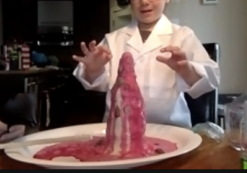Science Experiments for Kids
Example of experiments for grades 1 to 3 and 4 to 6
New experiments are added regularly - not all experiments are listed
CC = Curriculum Connections
Agamograph
One art piece; 2 drawings; 2 points of view… Is it art, cinema, optical illusion? Actually, it’s a bit of all of that, but most of all, it’s pretty!
Room specifications: N/A
What students need to bring: N/A
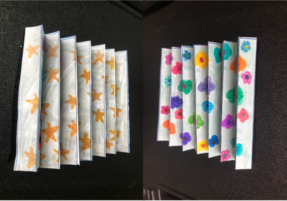
Articulated Hand (CC 5)
A hand is complex, delicate and necessary instrument in everyday life. Thanks to a simple and ingenious DIY, we will make a hand and try to pick up different objects.
Room specifications: N/A
What students need to bring: N/A
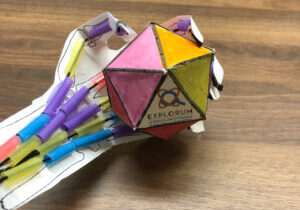
A Question of Balance (CC 3)
How do you carry heavy weights without heavy machinery? Why did Archimedes say, “Give me a lever long enough and a fulcrum on which to place it, and I shall move the world?” We will explain this world-old phenomenon in an uplifting experiment.
Room specifications: N/A
What students need to bring: N/A
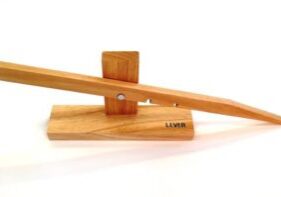
As Time Goes by (CC 1)
Measuring time with water, sand or by observing a shadow? Yes, it is possible! Together, we will build instruments to measure time like people did thousands of years ago!
Room specifications: running water
What students need to bring: 2 small empty dry plastic bottles with covers and 2 large (2 L) empty plastic bottle
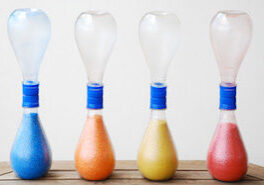
Art Fizz - chemistry
Chemistry to make art? Shaving cream to make modern patterns? This is what will do in this series of experiments that combine art and chemistry!
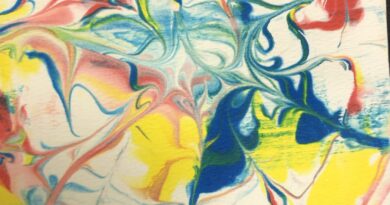
Animal tracks
Naturalists recognise animals by their footprints in the ground! Let's become trackers for a day, learn to observe fingerprints, make our own tracks, and compare them!
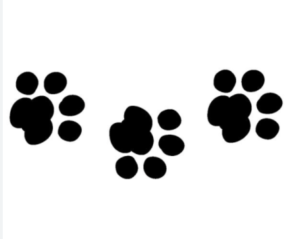
Bath Bombs (CC 1, 2, 5)
Chemical reactions can be visual, calorific, auditory, or even explosive. So? What does it all mean? It means we are going to create a reaction that will make FIZZ: we are going to create bath bombs!
Room specifications: running water
What students need to bring:
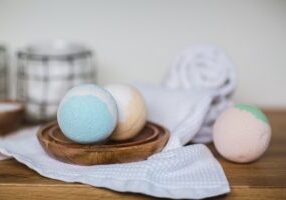
Boxes
Make 3-dimensional (3D) boxes using a 2-dimensional paper and a pencil drawing that you created yourself! Cubes, cones, and other shapes… just with a stroke of a pencil!
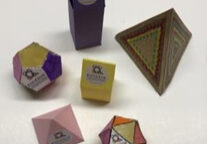
Bubbles
We all blew little soap bubbles; some were bigger than others… But have you ever concocted your own bubble solution? Have you tried making square bubbles? Let’s try all this in this messy (but clean) experiment!
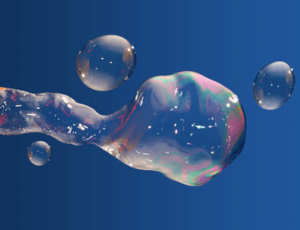
Catapult (CC 2, 4)
We all know that catapults were powerful and destructive medieval weapons based on a basic physics principle. Let’s recreate a simple catapult capable of throwing canon balls; no… paper balls!
Room specifications: N/A
What students need to bring: N/A
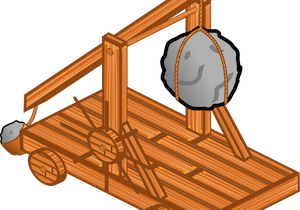
Chromatography (CC 4)
Creating colours from a simple black dot? It’s not magic; it’s chromatography! This is what we will do in this remarkable experiment.
Room specifications: running water
What students need to bring: small empty plastic bottle
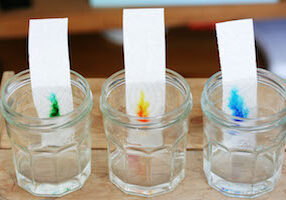
Construction Challenge
Who will build the highest, lightest, biggest most solid structure? With a little creativity, basic materials, and teamwork, we will build a table, a tower, shelves or something else… Whatever today’s challenge is, we are ready!
Room specifications: N/A
What students need to bring: N/A

Crystal Star (CC 4)
Can art and science co-exist? Can we create attractive crystals of different shapes? Of course! This is what we will do in this artistic and decorative experiment.
Room specifications: running water
What students need to bring: 500ml container with cover
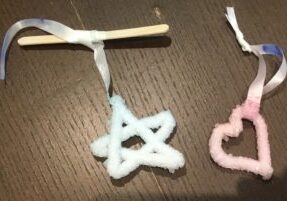
Density (CC 2)
Everyone knows that water and oil don’t mix, but “float” on each other. Why? Because of their density, of course! Let’s explore this phenomenon by creating a multi-coloured cocktail with liquids of differing densities.
Room specifications: running water
What students need to bring: small transparent empty plastic bottle with cover
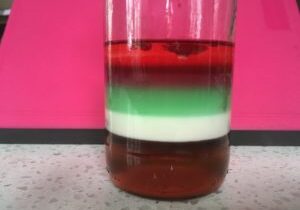
DNA Extraction
Did you notice her green eyes? Why are the descendants of Queen Victoria often haemophiliac? Who committed the crime? DNA will give us all the answers! Together, we will extract the DNA of today’s accused: a banana!
Room specifications: running water
What students need to bring: N/A
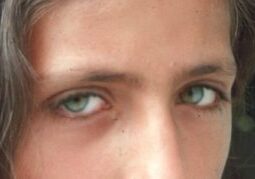
Electric Circuits (CC 6)
I turn on the light, ring the doorbell, reheat my meal… without electricity, it would not be possible. But how does electricity flow? How do you change its intensity? How do you cut the current? An electrifying experiment will help us solve these mysteries.
Room specifications: N/A
What students need to bring: N/A
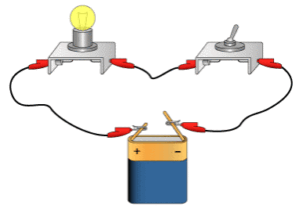
Fake Fossils (CC 4)
Fossils are the expression of the past, but nature takes thousands of years to make a fossil. In this experiment, we will speed up time and make fossils in a few minutes – fake ones of course! But we will understand how some of the real ones were formed.
Room specifications: running water
What students need to bring: 250+ml container with cover
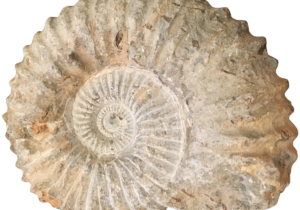
Filtration (CC 7)
Seventy percent of the earth’s surface is covered with water, but less than 3% of it is drinkable. Filtering water allows us to use more of it. Let’s filter muddy waters to simulate natural and industrial filtration processes.
Room specifications: running water
What students need to bring: 2 1L empty plastic bottles
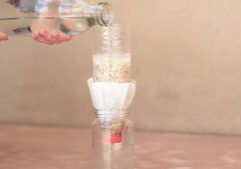
Fingerprints
What are fingerprints? How do they help solve a crime? Do I also have fingerprints? So many questions… A “digital” experiment will help us solve these mysteries.
Room specifications: running water
What students need to bring: N/A

Gooey Slime (CC 1, 2, 5)
Who doesn’t like playing with a viscous, slimy, sticky but fun substance? Let’s make slime together! Green, blue, yellow, red or even sparkly!
Room specifications: hot water
What students need to bring: N/A
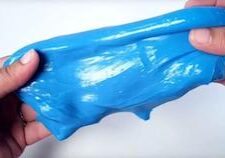
Girafe 2D/3D
It is so nice to see animals in the zoo or, even better, in the wild, but we can't go there everyday! Let's make our own menagerie. Today, a giraffe
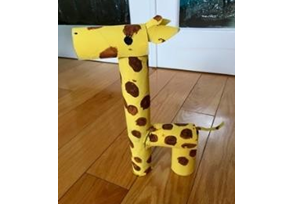
Helmet or Parachute? (CC 3, 5)
Why use a helmet? What are the best materials to protect from a free fall? What are parachutes for? Let’s build and test the best defences and protections against a free fall in this experiment devoted to gravity.
Room specifications: access to 4-5 m height
What students need to bring: N/A

Invisible Ink (CC 1, 2, 5)
Who would write an invisible message? Spies, magicians, lovers or friends exchanging secrets? Whatever our motive, we will make invisible ink, write a message and of course, discover the formula to reveal it.
Room specifications: running water; electricity
What students need to bring: N/A
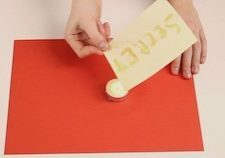
It floats, it sinks...
Mummy, why do big heavy boats float but tiny little marbles sink in the water? It’s because of their shape and their composition! Here is a little experiment to explore these differences.
Room specifications: Running Water
What students need to bring: N/A
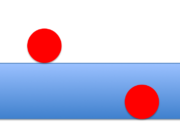
In my Body (skeleton and organs)
Many things keep our body standing and make it functional: bones, organs, systems… How are they organised? What are their uses? Let’s put them together and find out!

I'm an Astronaut (CC 6)
What do you want to do when you grow up? A lot of kids will say “Astronaut!” Let’s make our own space equipment and reveal some challenges in the professional life of an astronaut.
Room specifications: N/A
What students need to bring: cardboard box
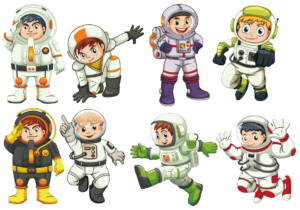
Kaleidoscope (CC 4)
What is a kaleidoscope? An optical illusion? Magic? Art? Actually, it is a little bit all these things. We will solve this mystery by each making our own decorated instrument.
Room specifications: N/A
What students need to bring: N/A
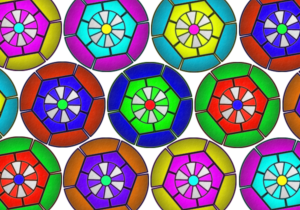
Lava Lamp (CC 5)
We all have been mesmerised by bubbles that slowly go up and down in a coloured solution. They look even better when they are OUR colourful bubbles! Let’s make chemical lava lamps that we can admire tirelessly.
Room specifications: running water
What students need to bring: small transparent empty plastic bottle with cover
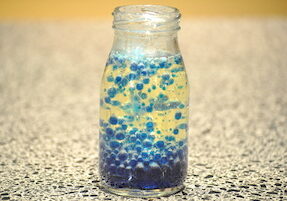
Let’s make paper (CC 5)
Instead of throwing our used paper and newspaper, we will recycle them – not by putting them in the recycling bin, but by giving them a new life: Let’s make paper and decorate it to our liking.
Room specifications: hot water; electricity
What students need to bring: coloured non-glossy paper for recycling
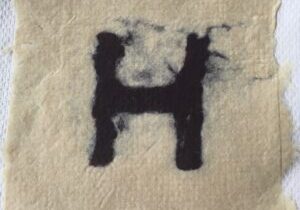
Life Cycle of the Butterfly
Butterfly, cocoon, crysalid, worm… Are these all the same organisms? Yes! We will rebuild its life cycle, squiggles and all, in a 3D artistic workshop.
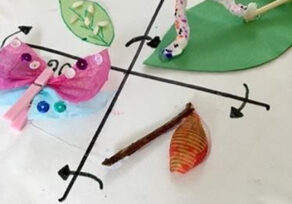
Life Cycle of the Frog
The frog is a strange animal; it can live in or out of the water - it is amphibian - and has different looks in its life cycle… Let's take a closer look in this artistic 3D workshops!
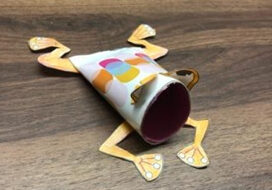
Liquid Rainbow (CC 2)
If we mix primary colours, we obtain secondary colours. But, can colours mix on their own? That’s what we will explore in this enchanted and colourful experiment!
Room specifications: running water
What students need to bring: N/A
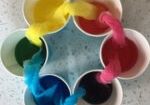
Meteorologist (CC 1, 4, 7)
Thermometer, barometer, hygrometer, heliograph, anemometer… These instruments help meteorologists predict tomorrow’s weather; it is important to choose your clothes but more importantly, for pilots, sailors, farmers and all those who work outside. Today, let’s be meteorologists!
Room specifications: running water, sunny window
What students need to bring: N/A
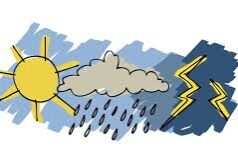
My Car (CC 4, 5, 6)
A car is very common, but a car we built ourselves? That’s more unique! An engine, four wheels, our engineering talent, and voila, we have a car!
Room specifications: N/A
What students need to bring: N/A
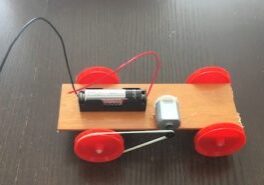
Musical Instruments
Let's build our own musical instruments for our next concert! Today… a guitar. Tomorrow, a Peter Pan flute, then a xylophone, and why not maracas or a tambourine…
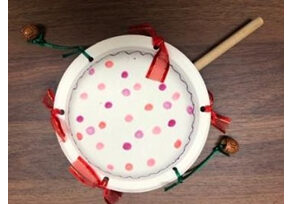
My Heart Beats (CC 4, 5)
How fast does the heart beat at rest? What about after exercising? Faster or slower? How do we know? The answers will be revealed in this practical experiment.
Room specifications: N/A
What students need to bring: N/A
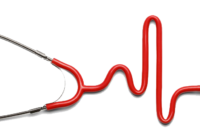
My Lungs (CC 5)
Inhale, exhale ... why do people’s breathing differ? What happens during breathing? How do the lungs work? Two simple experiments answer these and other questions.
Room specifications: running water
What students need to bring: small empty plastic bottle + 2 L empty plastic bottle
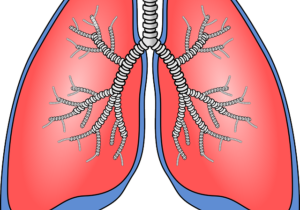
My pretty rainbow (CC 4)
Decompose light to create an indoor rainbow? Recombine colours by mixing the colours of the rainbow? It is possible: with Science! Let’s do it in two simple experiments.
Room specifications: sunny window
What students need to bring: N/A
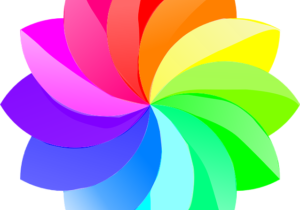
Natural plastic? (CC 1, 2, 5)
Make plastic out of natural ingredients? Thanks to magic (!?) no, thanks to science, we make environmentally friendly plastic. We will then compare our environmentally friendly plastic to its industrial counterpart.
Room specifications: heating element/microwave
What students need to bring: small container with cover

Nice Tree? (CC 1, 2, 6)
Sciences, arts, function, form… a little bit of each! Let’s be creative and build a tree from various elements from nature. We will study the purpose of each component in this imaginative activity.
Room specifications: access to the outdoors
What students need to bring: N/A
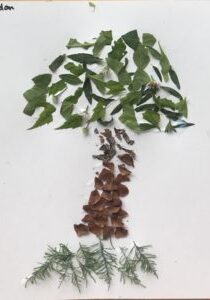
Our Solar System (CC 3, 6)
Aren’t our planets pretty orbiting around our brilliant sun? Let’s build a model of our solar system and decorate it to our liking.
Room specifications: N/A
What students need to bring: thick coloured felt pens
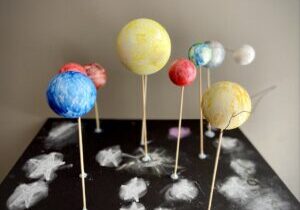
Oil spill
Catastrophe! The oil tanker had an accidental leak: 300,000 litres of crude oil poured near the coast. Both flora and fauna are affected! Let’s find the best way to save both after this environmental upheaval.
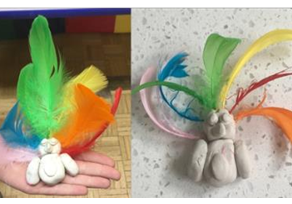
Plant Maze (CC 2, 6)
Living things are expert survivors. Whether humans, bacteria, insects or plants, adaptation is what we do best to survive. We will put this theory to the test in a winding experiment.
Room specifications: N/A
What students need to bring: shoe box
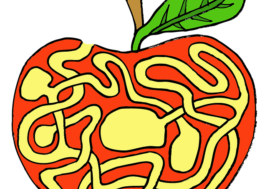
Poly-Polymers - Slime and Bouncy Ball (CC 1, 2, 5)
Who doesn’t like playing with viscous, gooey, sticky and mysterious substances? In this chemistry experiment, we will produce strange polymers like sticky slime and more.
Room specifications: hot running water
What students need to bring: container with cover
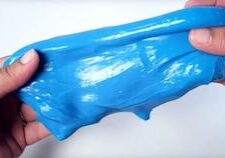
pH indicator
Potential Hydrogen, pH, acid, base, buffer… sounds complicated! Let’s do a few experiments to explore this basic (or acidic) chemical concept.
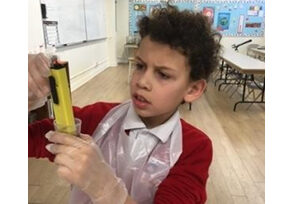
Quilling
What is the use of paper? Write words, make paper airplanes, write books, copy our schoolwork, yes… and much more! Today, we’re making art with coloured paper rolls!

Roller coaster
We can’t go to an amusement park every day, but we can make our own roller coaster and play with it when we want!
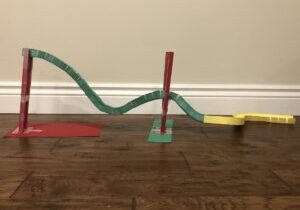
Solar Eclipse (CC 6)
The sun disappears and reappears right in front of our eyes in the simulation of a rare but fascinating event: the solar eclipse! Let’s create our own miniature eclipse in this enlightening experiment.
Room specifications: N/A
What students need to bring: N/A
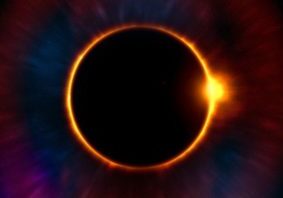
Solar Oven (CC 5)
Melt chocolate without fire, without an oven or a heater… how is that possible? By building a solar oven, of course!
Room specifications: sunny window; electricity
What students need to bring: pizza box or large shoe box
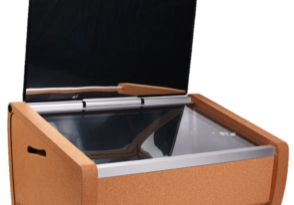
String Art
An art piece using string or yarn, what a great idea! Let’s create a star, an octagon or other shapes to decorate while learning about geometry and symmetry!
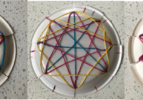
String Bowl
A decorative bowl we do ourselves, what is prettier? Depending on the materials we use and the shape we mold, our bowl will have various uses… let’s explore, create and mostly, let’s have fun!
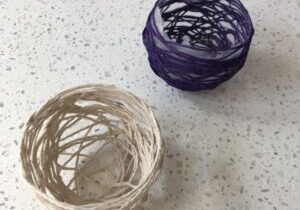
Stylus
How is it that I can control my phone while wearing gloves today, but yesterday, it didn't work? We will see that some materials are conductors (like our fingers), while others are not in this functional experiment while we assemble a stylus.
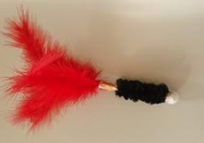
Swiggly Worm
Spring worms in autumn or winter? Yes, it is possible when we make our own! The bonus is that it moves only when we want it to!
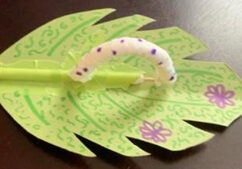
Symmetry and 2D vs. 3D
The circle is symmetrical in all its axes, the square and the rectangle are symmetrical in 2 axes, but what about other geometric shapes or artistic ones? Let's explore this concept and the relationship between 2D and 3D shapes in this geometrical experiment.
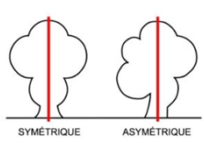
Thaumatrope
Optical illusion? Magic? Sciences? It’s a bit of all that! A thaumatrope teaches us about something called retinal persistence, which causes our eyes to mislead our brain into seeing something that isn’t!
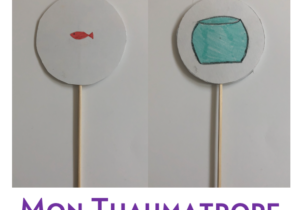
This is chemistry (CC 1, 2, 5)
Mixing specific substances can produce heat, colour, bubbles or other interesting “things.” This is what chemistry is all about! Let’s do a few experiments together to illustrate some of these outcomes (and have fun)!
Room specifications: running water
What students need to bring: small empty plastic bottle
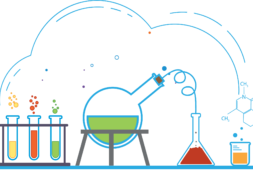
Volcanic Eruption (CC 3, 4)
Volcanic eruptions are often destructive; burning lava, falling rocks and toxic gases all have dangerous consequences on humans. Our volcano won’t be threatening; in fact, it will be artistic, harmless and will introduce us to volcanology.
Room specifications: running water
What students need to bring: N/A
